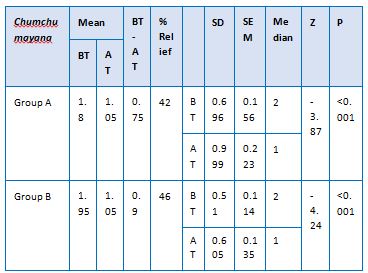Randomised controlled clinical study to evaluate the efficacy of Rajinidvandvadi Kwatha and Nisha Amalaki Kwatha in Prameha Upadrava vis-a-vis Diabetic Peripheral Neuropathy
DOI:
https://doi.org/10.21760/jaims.8.12.4Keywords:
Prameha Upadrava, Diabetic Peripheral Neuropathy, Rajanidvandvadi Kwatha, Nishamalaki KwathaAbstract
In Ayurveda, although there is no direct correlation for Diabetic Peripheral Neuropathy but the most basic symptoms mentioned under Purvaroopa and Upadrava of Prameha such as Karapada Daha, Karapadasuptata, Toda (Shoola), Harsha / Chuchumaya (tingling sensation), Shosha (wasting), Dourbalya (weakness), and Angasaad (malaise) all these resemble the condition of DPN. Pathology behind it is can be studied under Madhumeha Upadrava caused by Avarana Janya Vata Prakopa. And Upadravas are those which develop after the onset of main disease and are dependent on Pradhaana Vyadhi. It will have the same Nidaana, Dosha, and Dushyas as that of the main Disease, though they have Samprapti of its own. When main Disease is managed well, complications will disappear. With this intention, Rajanidvandvadi Kwatha one of the classical Ayurvedic formulations mentioned under Prameha whose all the ingredients are herbal in origin and are known to have Pitta and Vatahara effects but its efficacy has not been documented. Also, Rajani (Nisha) is considered to be Agraoushadha (Drug of choice) in Prameha hence an effort has been made to evaluate the efficacy of Rajanidvandvadi Kwatha in Prameha Upadrava.
Downloads
References
Yogaratnakar, edited and translated by Dr. Asha Kumari & Dr. (Km.) Premavati Tewari, Chaukhambha Visvabharati
Joshi.R Shashank “Technical monogram diabetic neuropathy” Mumbai SAM and Span Asian Healthcare 2003
Peter James Dyck; “Detection, characterization and staging of polyneuropathy, assessed in Diabetes;” muscle and Nerve, 1988; 111:21-32.
Dyck et al. “Diagnosis staging and classification of diabetic neuropathy”-Diabetic Neuropathy 1987-36-44.















